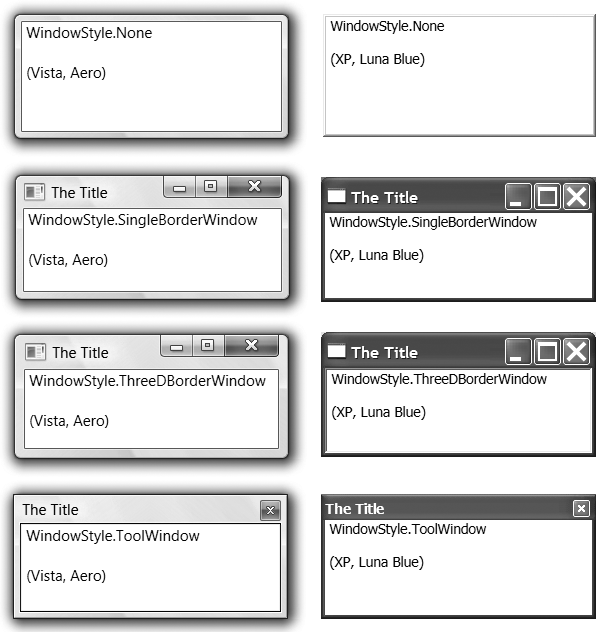Chapter 10. Windows and Dialogs
The Window class, mentioned in
Chapter 2, is the required class for
the application's main window. To fit in with the rest of the Windows
applications, the WPF Window class is
flexible. It supports building top-level style main windows and dialogs,
which we'll discuss in this chapter, as well as serving as the base class
for the NavigationWindow, which we'll
discuss in the next chapter.
Window
In Chapter 2, we looked at the
lifetime and services of an application, often as related to the windows
that constitute the UI of the application. However, we didn't talk much
about the windows themselves. The Window class derives from the ContentControl (described in Chapter 5) and adds the chrome around the edges that
contains the title; the minimize, maximize, and close buttons; and so
on. The content can look however you want. The chrome itself has more
limited options.
Window Look and Feel
The look and feel of the frame of a window is largely determined
by the Icon, Title, and WindowStyle properties, the latter of which
has four options (None, SingleBorderWindow, ThreeDBorderWindow, and ToolWindow), shown in Figure 10-1 (the default is
SingleBorderWindow).

Figure 10-1. Window styles in Windows Vista and Windows XP
You'll notice that the icon and/or title are shown or not
depending on the window style. You'll also notice that the None WindowStyle still contains ...
Get Programming WPF, 2nd Edition now with the O’Reilly learning platform.
O’Reilly members experience books, live events, courses curated by job role, and more from O’Reilly and nearly 200 top publishers.

